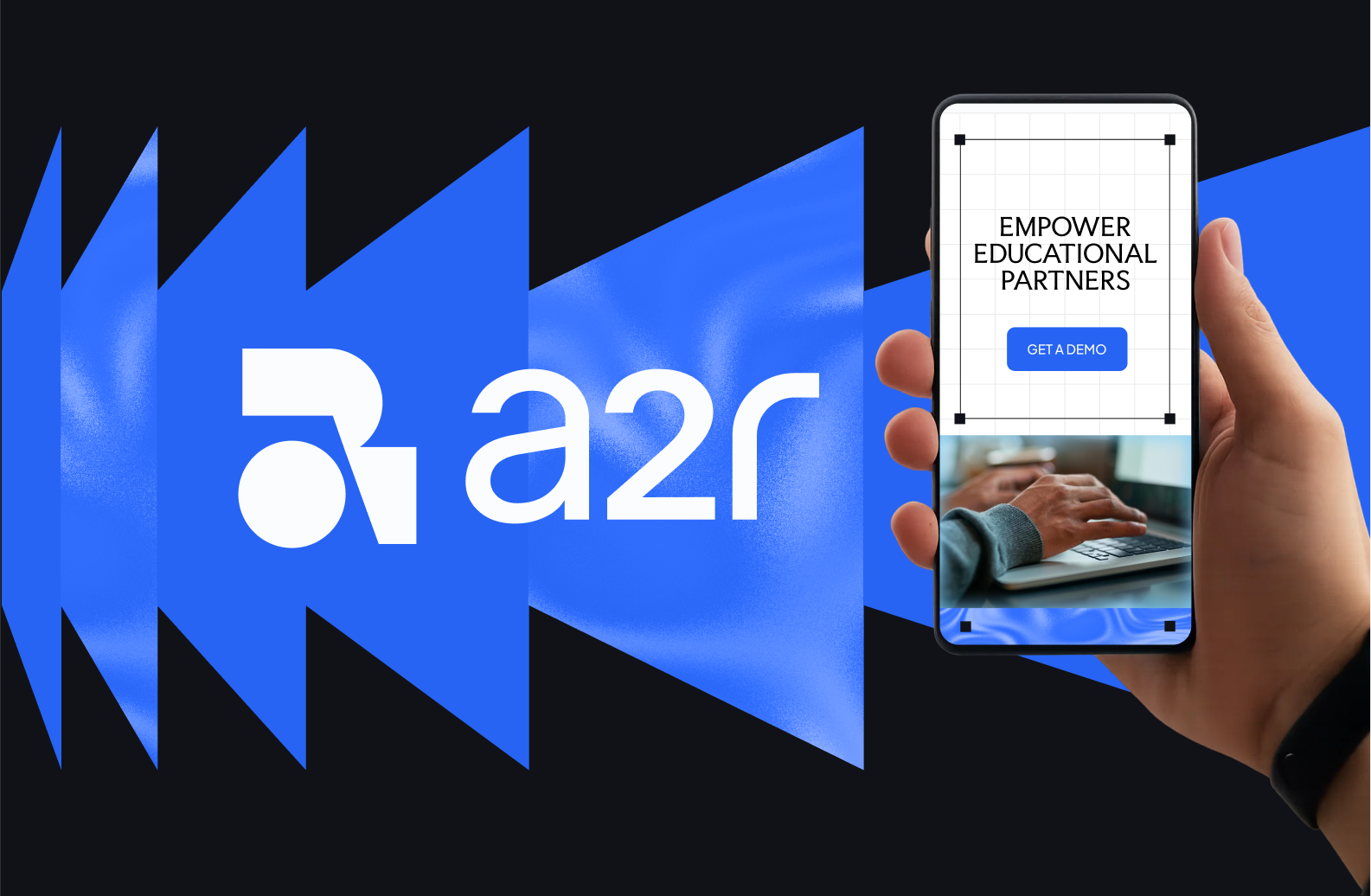Branding doesn’t have to be overwhelming or take half a year; especially when you're working with clear priorities. Launching or refining your brand efficiently requires a focused approach that balances speed with strategy.
In this guide, we outline the essential steps to build a strong, consistent startup brand without wasting time, so your team can stay aligned and your brand can grow with clarity. This is your cheat sheet to launch your new brand before Q4.
Step 1: Evaluate your current brand identity (if you have one)
Step 2: Get your team on the same page
Step 3: Build a strong and strategic brand foundation
Step 4: Create a strong visual identity for your tech startup
Step 5: Prepare brand guidelines
TL;DR?
How can you save time and resources in startup branding?
Step 1: Evaluate your current brand identity (if you have one)
Before you refine and relaunch your brand, it's crucial to conduct a full brand audit (if you’ve currently got a visual identity applied) and compare your startup's branding with your competitors. This process reveals what’s working, what’s outdated, and precisely where to focus on.
Conduct a brand audit
Begin with an examination of your visual and verbal identity. Review core elements like logo, typography, color palette, imagery, brand messaging, and tone of voice. Evaluate how these assets appear across platforms—website, social media, pitch decks, presentations, and marketing collateral. This provides a baseline for consistency and reveals any visual or messaging gaps.
Note: Not every brand audit results in a complete rebrand. As rebranding requires resources, it's essential to first evaluate your current brand’s positioning and performance in the market. This assessment helps determine whether your identity still supports your goals or needs to evolve.1
Benchmark against competitors
Assess your brand’s market position by comparing your brand identity, tone, and messaging with competitors. Identify where whitespace exists for differentiation; in other words, what’s missing in the competitor’s identity that you could add. A brand audit helps you pinpoint the aspects that truly set your brand apart.
One common strategy is to create a brand perception or positioning map.
Learn how to create a visual brand positioning map in this blog post.
Define key evaluation metrics
Establish criteria to guide your assessment, such as:
- Cohesion: Are visual and message elements consistent across platforms?
- Recognition: How quickly can audiences recognize and recall your brand?
- Relevance: Does your current identity resonate with your ideal customer? Does it reflect your product and USP?
- Emotional alignment: Does the perceived brand personality align with your desired archetype?
Step 2: Get your team on the same page
Whether your internal design team is handling your branding or you're partnering with a startup branding agency, alignment on the strategic elements that influence your brand direction is crucial. Budget and timelines matter, but so do clarity, differentiation, and scalability.
In this blog post, we reveal 10 things to know before branding your startup. We’ve gathered all the information you need to get everyone aligned to do a successful (re)launch of your brand.
Use this FigJam template to collect all the necessary information in one place.
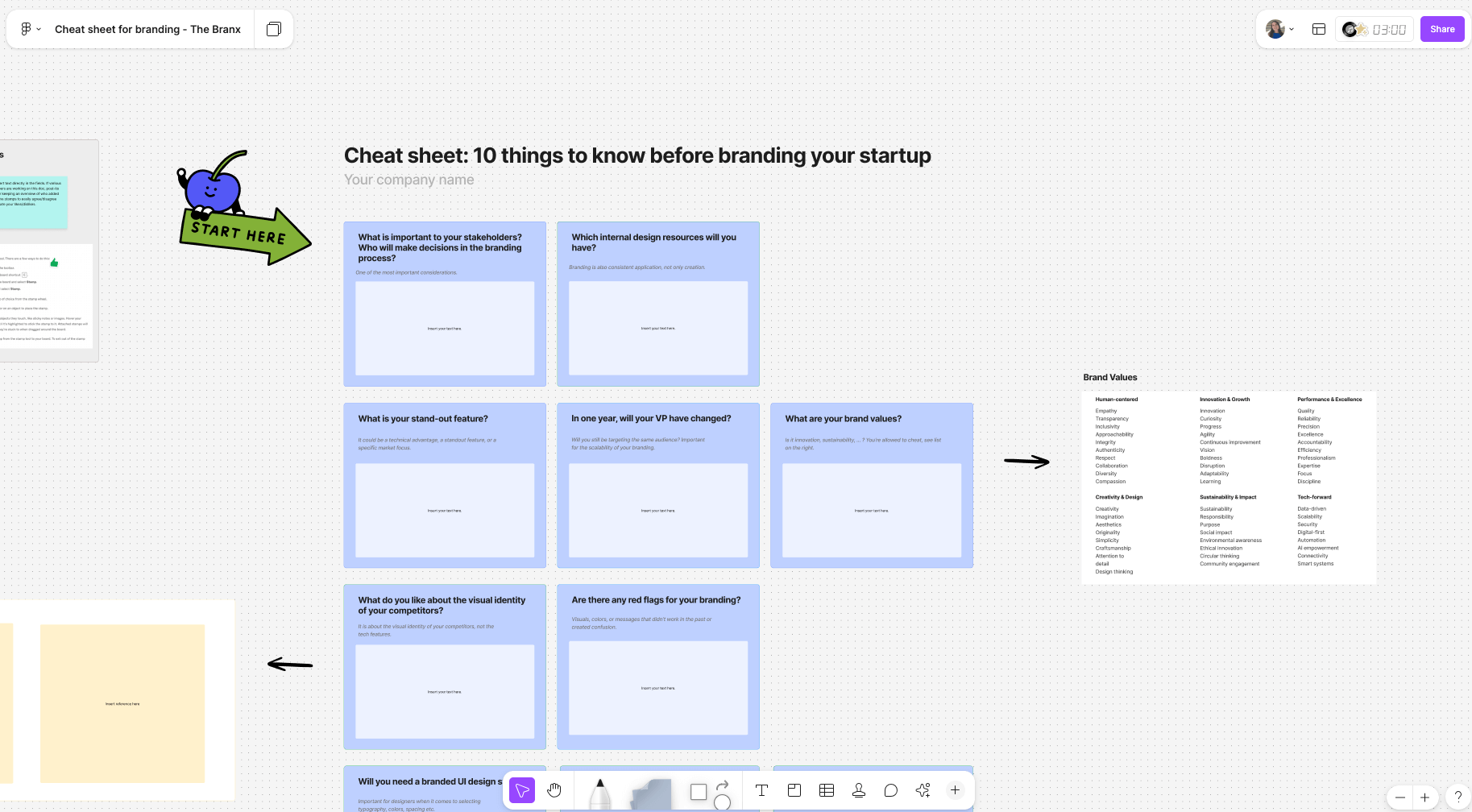
A tip from our project manager Carla Pepe for clear internal communication:
Try not to present this project as just a “brand update” or a simple “logo change.”
"Position the project as an important change to the business. Startup (re)branding is a tough effort and should get the resources and dedication it deserves."
Step 3: Build a strong and strategic brand foundation
Before you start designing, make sure your startup’s brand personality and positioning is clearly defined. A strong foundation builds trust with users and makes your messaging and product memorable.
Define your startup’s mission and values
Clarify your mission and core values to guide decisions and messaging. Ask yourself:
- What unique problem does your technology solve?
- Who is your target user, and what do they care about?
- What principles guide your approach to innovation and user experience?

Understand your target users
Create ideal customer profiles (ICPs) that capture:
- Key demographics (role, company size, industry, tech-savviness)
- Pain points in their workflow or industry
- Motivations for adopting new tools or solutions
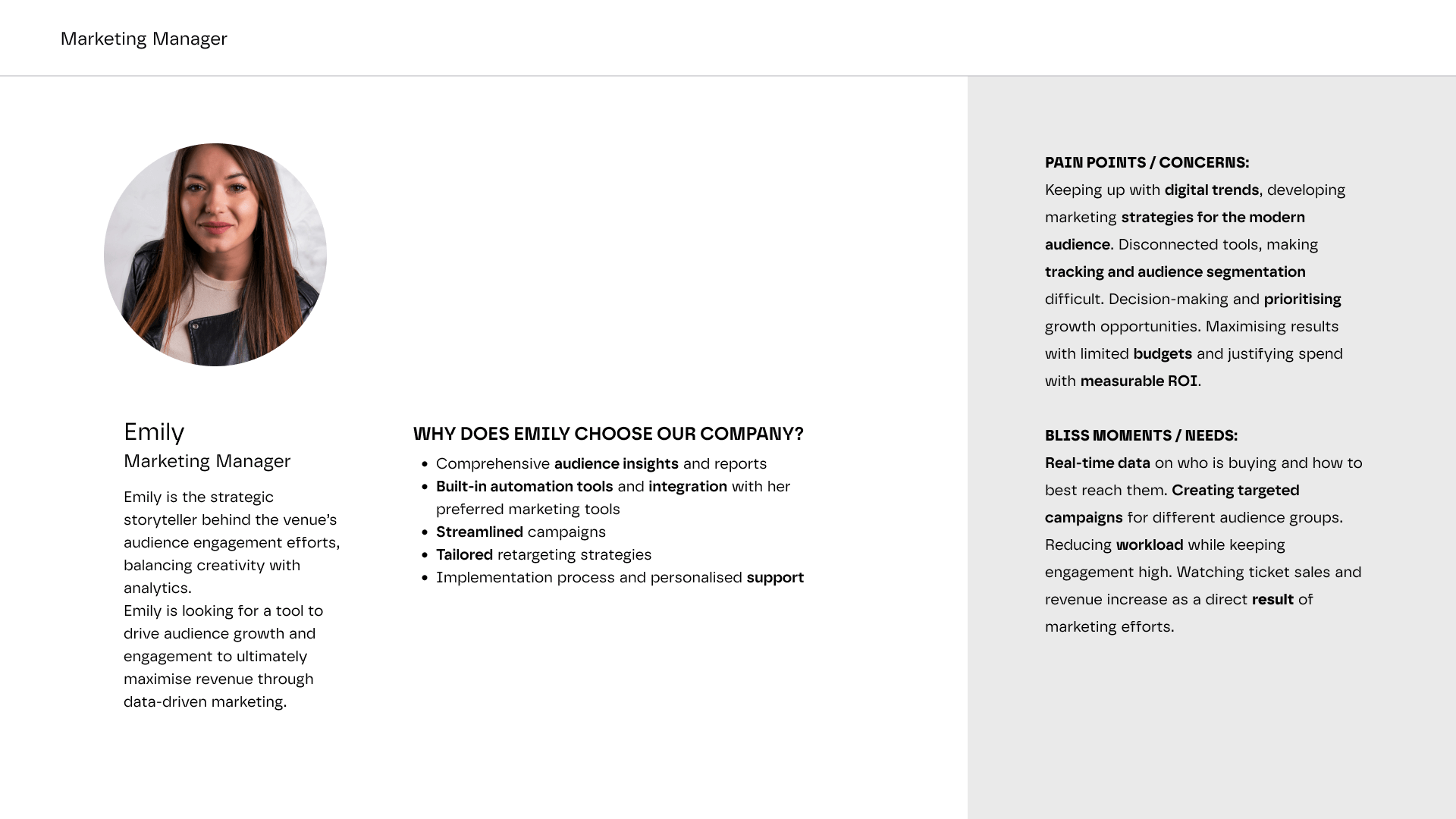
Craft a compelling value proposition
Clearly articulate what makes your product different. Your value proposition should be concise, focused, and solution-oriented. Examples for tech startups:
- “Instant team collaboration with secure real-time file sharing.”
- “AI-powered scheduling that learns and adapts to your routine.”
This statement will not only anchor your positioning on landing pages, in pitches, and in product demos; a clearly formulated VP also makes it easier for a startup branding agency or your internal design team to communicate your value on a visual level.
Carve out a distinct market position
Study competitors and identify their strengths in messaging and branding. Often, this point is overlooked, but it is crucial in order to define the direction of your new brand identity.
You can use the visual positioning map you’ve maybe created in one of the previous steps to outline how competitors present themselves and how your USP fits into this.
We've created a template that makes crafting a strong brand strategy easy.
Step 4: Create a strong visual identity for your tech startup
These are the basics of a strong visual identity:
- Colors: Some rebranding clients want to keep one key color of their previous brand to make brand recognition easier.
- Typography: For easy brand application, we recommend Google Fonts.
- Photography: There is no excuse anymore for using Stock photos. Learn how to create distinctive AI brand imagery here.
- Brand shapes: They can be used for backgrounds, compelling visuals, etc. and help brand recognition.
- And, of course: your startup logo.
Just one quick word about “logos”:
What outside the graphic design bubble is referred to as “logo”, is maybe: a wordmark, an isotype, an imagotype, or an isologo. Learn more about the different logo types in this blog post.
The most common logo types among startups are wordmarks (typographic representations of the brand name) and imagotypes (a combination of an isotype and a wordmark).
For startups, especially in tech, imagotypes offer flexibility across a range of physical and digital touchpoints. This format allows brands to use both the icon and the wordmark together in early stages, then gradually shift toward using the icon alone as recognition increases. It’s a scalable approach that supports brand growth and visibility. Examples include the Edtech startup A2R and the Travel tech startup Diamo.
Wordmarks, on the other hand, can be a strong choice for startups with short, distinctive names. When the brand name is clearly displayed, it helps with memorability and reinforces brand recognition—especially during initial market entry. Examples include the SaaS platform Easor and the Martech startup RevvedUp.
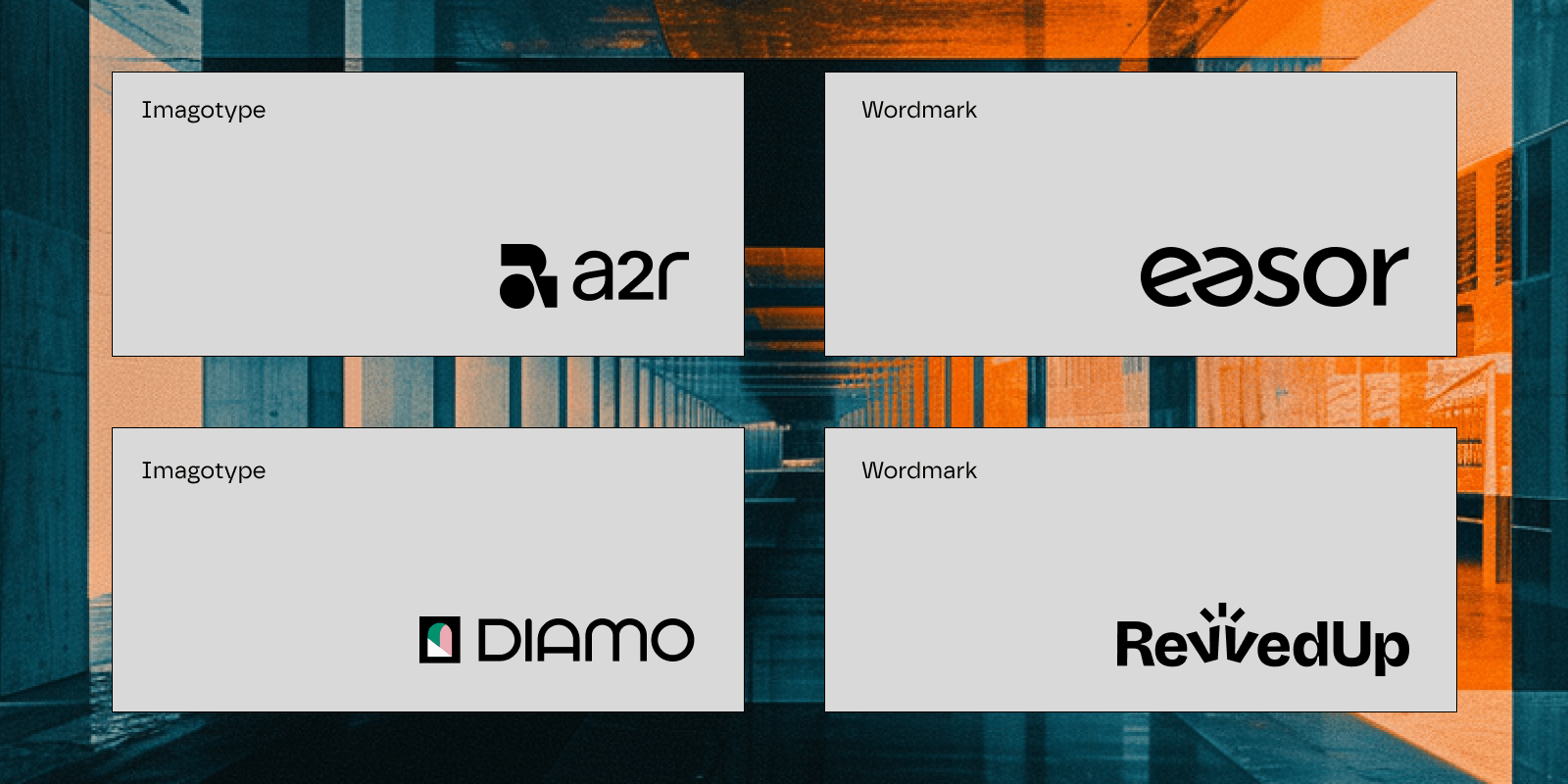
Choosing between a wordmark or an imagotype depends on how and where your logo will be used, the strength of your name, and your long-term brand strategy.
Step 5: Prepare brand guidelines
Once your visual identity is finalized, the next step is to document it clearly and thoroughly. Ask your startup branding agency or internal design team to create a brand book that outlines how your brand should be applied across all touchpoints.
What are brand guidelines?
Brand guidelines serve as a reference tool that ensures consistency in how your brand is represented, both internally and externally. They typically include specifications for your logo usage, color palette, typography, imagery style, layout systems, iconography, and tone of voice. Depending on your business model, they may also cover social media applications, product UI direction, presentation formats, and motion principles.
Why are brand guidelines important?
Having structured brand documentation is especially important for startups planning to scale. It helps onboard new team members faster, align third-party collaborators, and maintain brand integrity across marketing, product, and investor communications.
A clear brand book doesn’t just preserve design consistency; it reinforces your startup’s credibility and professionalism at every interaction. For early-stage companies, this can be a key differentiator when building trust with customers, partners, and investors.
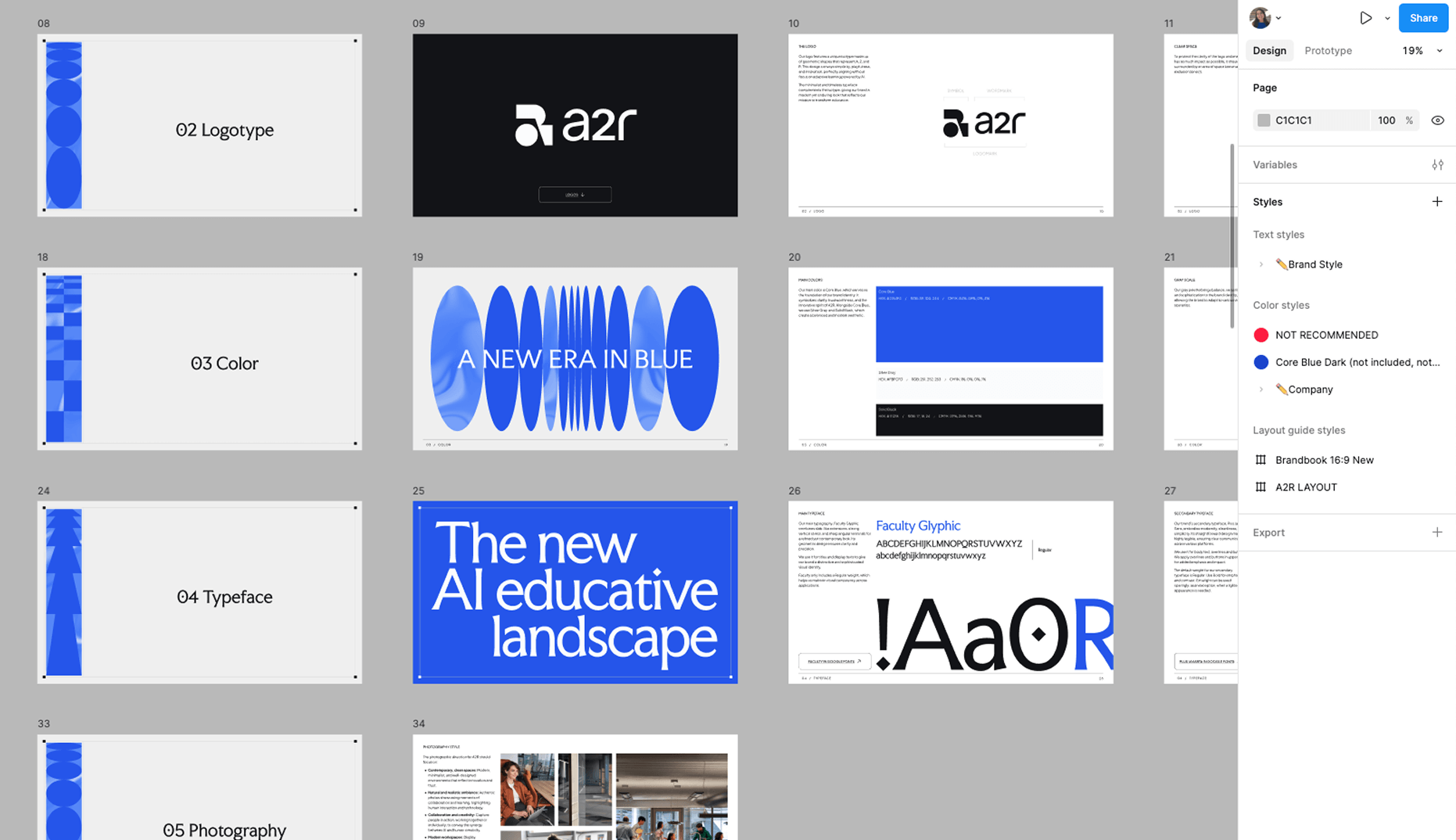
Why you should rebrand or launch before Q4
For startups, the period leading up to Q4 is a great time to boost your visibility, bring in early adopters, and build momentum ahead of big industry events or funding rounds.
Gain visibility ahead of the industry rush
Q4 is when many startups aim to secure final rounds of funding, partnerships, or prepare for major conferences and accelerator programs. By launching before Q4, you gain market visibility early, allowing time for feedback, iteration, and traction before the end-of-year rush.
Some startup events in Q4 2025 you shouldn’t miss:
- Bits & Pretzels: September 29-October 1, Munich (DE). The startup festival gathers founders, investors, and operators in a setting that blends business insights with Munich’s Bavarian atmosphere. Keynotes from industry leaders, hands-on workshops, and targeted networking sessions are designed to offer practical guidance on building and scaling startups.
- Gitex Global: October 6-10, Dubai (UAE). The largest tech event in the Middle East connects startups, corporates, investors, and public sector leaders from over 170 countries. With dedicated tracks on AI, Fintech, cybersecurity, and emerging technologies, it offers a platform for visibility, partnerships, and international growth.
- Elevate: October 7-9, Toronto (CA). Elevate is a Canadian innovation festival that brings together technology, creativity, and social impact. With a focus on sustainability, inclusion, and emerging technologies, Elevate attracts a diverse audience across startups, enterprises, and the creative sector.
- TechCrunch Disrupt: October 28-30, San Francisco (US). TechCrunch Disrupt is a well-established event for early-stage startups, known for its focus on innovation and product-driven growth. It brings together investors, founders, and industry leaders, featuring pitch competitions and startup showcases that have helped launch several high-growth companies.
- Web Summit: November 11-14, Lisbon (PT). Web Summit is one of the largest global gatherings for the tech and startup ecosystem, drawing over 70,000 participants from startups, investors, media, and leading tech companies. It is a key platform for visibility, partnerships, and industry insights.
- Slush: November 19-20, Helsinki (FI). Slush brings together over 12,000 participants in a founder-focused setting. Known for its curated networking and startup-investor matchmaking, it stands out as one of Europe’s key gatherings for early-stage startups and venture capital.2
Build momentum for funding and product iteration
Q4 often aligns with application deadlines for pitch competitions or demo days. By establishing your presence ahead of time, you can showcase user growth, iterate based on feedback, and present a more mature product to stakeholders. Ideally, you have already applied your new branding to your product and platform.
TL;DR? How to save time in branding
If you follow these five steps, your startup’s branding process will be efficient and strategic. Avoid rushing it though; whether you're rebranding or launching a completely new brand, it requires strategic focus and internal alignment.
- Start by identifying what already works in your current brand and in your industry. This saves valuable time during the design phase and gives your team more room to create visual assets that are both compelling and relevant.
- Internal alignment is critical. When everyone on the team shares the same understanding of the brand direction, decisions are faster and feedback loops are shorter.
- A clear brand strategy—anchored in personality and positioning—ensures your visual identity reflects your business goals. It also makes the design process more structured and intentional.
- Focus on building a strong foundation: your logo, color palette, typography, and imagery. These core elements shape the perception of your brand and ensure consistency across all touchpoints.
- Finally, document everything in a brand book. It provides the structure your team needs to apply the identity consistently and scale the brand as you grow.
What are you waiting for?
Start your branding journey now: be efficient and strategic.
Sources
2 https://www.startupblink.com/blog/top-startup-events-in-the-world-to-attend/

